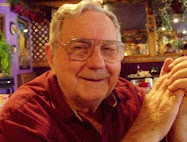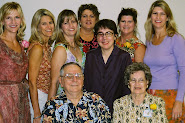In another puzzling example from my service work, I had to struggle my way through the problem with a larger audience watching.
When I moved to Tomball, Klein Feed Store stood next to the grocery store, where the entrance door to TEAM’s resale shop is now located. Later they built a feed store behind the TEAM building, facing Cherry Street. Most feed came in 100 pound sacks. As more dairies and cage houses moved into the area they bought feed in bulk.
Klein’s built a feed mill east of the railroad and south of 2920. I don’t know who built the mill and did the electrical, but it was very well done. The mill was managed by George Klein. When the warranty expired, they started calling me for electrical problems. Most were minor like blown fuses or tripped overloads. One day after the mill had been in operation for maybe 5 years, Mr. Klein called, just as I sat down for my noon meal: “My mixer is not running and the chickens are running out of feed.” I asked if he had pushed the reset and checked if the mixer was hanging on something. He answered yes to both questions.
I left my lunch and drove to the mill. Everything was shut down and everyone was standing around the mixer, which was in the northeast corner of the building. I first checked the fuses, which were good. There was a ladder leaning on the mixer next to the motor. I asked one of the men to go up and try turning the mixer by pulling on the belts. George said they had already done that, but I was stalling for time. The mixer was full but could be turned. When the man came down I pushed the reset and then the start. There was nothing else running and I could hear the motor hum.
I turned off the power, which was 460 volts, 3 phase, meaning the motor needs 3 wires to run. I opened the motor contactor to check for burned wires and/or contacts. Everything at a feed mill is full of dust, and George had a compressor that I used to blow the dust out of the contactor can. The contacts were used but still looked good. Then I noticed lying in the bottom of the can one wire not hooked to anything. Where it was supposed to be fastened the screw was tight. The insulation had not been stripped from the end of the wire as it would have been if previously attached, and the wire had not been cut or broken. The box and the wire inside were covered with ¾ inch of dust.
I climbed the ladder to look at the nameplate. Again I was stalling for time. How could the motor have run all these years on two wires? And a bigger concern, if I hooked up the third wire and the motor burned, it would mean several thousand dollars out of my pocket.
I removed the other wires, turned on the power, pushed start and checked the voltage where I had removed the wires. Then I turned off the power, connected all 3 wires, closed the contactor box, turned on the power, and pushed start. The motor started and ran, pulling the amperage listed on the nameplate. To my knowledge the motor was still running when the mill was eventually shut down.
A motor running a big feed mixer cannot run on two wires. I wish I had taken a picture of the third wire lying in the bottom of the box. Maybe my memory is playing a trick on me.
WELCOME TO MY BLOG
I greatly enjoy comments from friends and other readers - if you are inspired to leave a message, you may contact me directly or click on the word COMMENTS at the end of a blog entry.
Ben Online - typing, reading & reacting
Tuesday, March 4, 2008
Subscribe to:
Post Comments (Atom)
Blog Archive
-
▼
2008
(18)
-
▼
March
(9)
- POISON IVY & POISON OAK REVISITED (a springtime st...
- THE ASSASSINATION OF JOHN F. KENNEDY REVISITED
- THIS BUTTER NEVER SAW A COW
- A SMALL GIRL IN ALSACE: from Recollections of WW I...
- BARTENDING: from Recollections of WW II
- UNEXPLAINED, PART II
- UNEXPLAINED
- GETTING HURT BY A HOSPITAL BED
- TOMBALL IN AND OUT OF THE GARBAGE BUSINESS
-
▼
March
(9)
Ben the Cook

Action shot from the 1970s
RECIPE CORNER
TUNA "SURPRISE"
I recently made Tuna Helper, following the instructions on the box and adding margine, milk, etc. Priscilla and I had generous portions for lunch. When she asked about my recipe, I pointed to the kitchen table where the box was sitting...and only then noticed the unopened can of tuna sitting next to the empty box.
Well, we enjoyed our macaroni & cheese lunch and already have the tuna on hand to make another box of Helper.
HONEY COOKIES
I watched the TV news show "The Eyes of Texas" for years. When in the mid 1980s they announced the publication of a Texas cookbook I wrote down my grandmother's honey cookie recipe. I asked Priscilla to type it, and she mailed it along with several of her personal favorites.
When the book was published Priscilla's recipes were not included but mine was, with a special mention in the cookbook's introduction. I was invited to the signing in Houston, where I got all three of the main Eyes of Texas contributors to sign the front and while standing in line got a number of contributing cooks to sign their recipe pages.
Some might consider the description "somewhat chewy" an understatement. For those who are dentally impaired, I recommend soaking a cookie in milk or hot coffee before trying to chew it. The good news is, these cookies will keep indefinitely.
Eyes of Texas Cookbook introduction:
My great-grandparents August and Caroline Weiss operated the first cotton gin operated by steam, near Salem in Washington County, Texas. They were among the first German settlers in that area. Money was scarce; however, they always had bees and native pecans...consequently, this recipe was a favorite.
1 1/2 pints honey, warmed
1 1/2 cups brown sugar
Dash of salt
1/2 tsp. cinnamon
1 cup chopped pecans or other nuts
1 tsp. baking powder
Enough flour for a very stiff dough
Mix all ingredients well. Roll dough out on a floured board and cut with a cookie cutter, or drop the dough in a greased pan and flatten with a floured glass. Bake at 325 degrees until golden brown, with edges slightly darker. These cookies will be somewhat chewy.
I recently made Tuna Helper, following the instructions on the box and adding margine, milk, etc. Priscilla and I had generous portions for lunch. When she asked about my recipe, I pointed to the kitchen table where the box was sitting...and only then noticed the unopened can of tuna sitting next to the empty box.
Well, we enjoyed our macaroni & cheese lunch and already have the tuna on hand to make another box of Helper.
HONEY COOKIES
I watched the TV news show "The Eyes of Texas" for years. When in the mid 1980s they announced the publication of a Texas cookbook I wrote down my grandmother's honey cookie recipe. I asked Priscilla to type it, and she mailed it along with several of her personal favorites.
When the book was published Priscilla's recipes were not included but mine was, with a special mention in the cookbook's introduction. I was invited to the signing in Houston, where I got all three of the main Eyes of Texas contributors to sign the front and while standing in line got a number of contributing cooks to sign their recipe pages.
Some might consider the description "somewhat chewy" an understatement. For those who are dentally impaired, I recommend soaking a cookie in milk or hot coffee before trying to chew it. The good news is, these cookies will keep indefinitely.
Eyes of Texas Cookbook introduction:
My great-grandparents August and Caroline Weiss operated the first cotton gin operated by steam, near Salem in Washington County, Texas. They were among the first German settlers in that area. Money was scarce; however, they always had bees and native pecans...consequently, this recipe was a favorite.
1 1/2 pints honey, warmed
1 1/2 cups brown sugar
Dash of salt
1/2 tsp. cinnamon
1 cup chopped pecans or other nuts
1 tsp. baking powder
Enough flour for a very stiff dough
Mix all ingredients well. Roll dough out on a floured board and cut with a cookie cutter, or drop the dough in a greased pan and flatten with a floured glass. Bake at 325 degrees until golden brown, with edges slightly darker. These cookies will be somewhat chewy.
Ben's Links
Ben's Bio
I was born in Rose Hill, Texas in 1925 and at age 18 drafted into the Army. After my discharge I settled in Tomball, which although a small town had more opportunities than Rose Hill. I ran my own appliance installation and repair business for many years and in 1977 accepted a position as Plant Engineer and Director of Maintenance at Tomball Regional Hospital, where I worked until retirement in the late 1980s. In the 1970s I served two years on Tomball’s City Council, was elected mayor and served for six years during which major streets were paved and guttered, utility lines were extended, and a new jail and city hall were built. After retirement from the hospital I spent time on a genealogy project that included two trips to Germany to visit relatives and look up archival records. I have also gotten into writing, chronicling my WW II experiences and authoring Growing Up in Rose Hill, published by private press and sold as a fund-raiser for the Tomball Community Museum Center, where I have served as a volunteer, trustee and Chairman. I am still involved with the Tomball hospital as a weekly volunteer and serve as General Manager of Tomball Emergency Assistance Ministries (TEAM), a church-sponsored operation that provides food and other assistance to area families. I continue to be involved in writing about my childhood and personal interests, and I still enjoy woodworking and other handyman projects. My wife and I still live in Tomball and are not far from most of our 8 surviving children and 14 grandchildren.








No comments:
Post a Comment